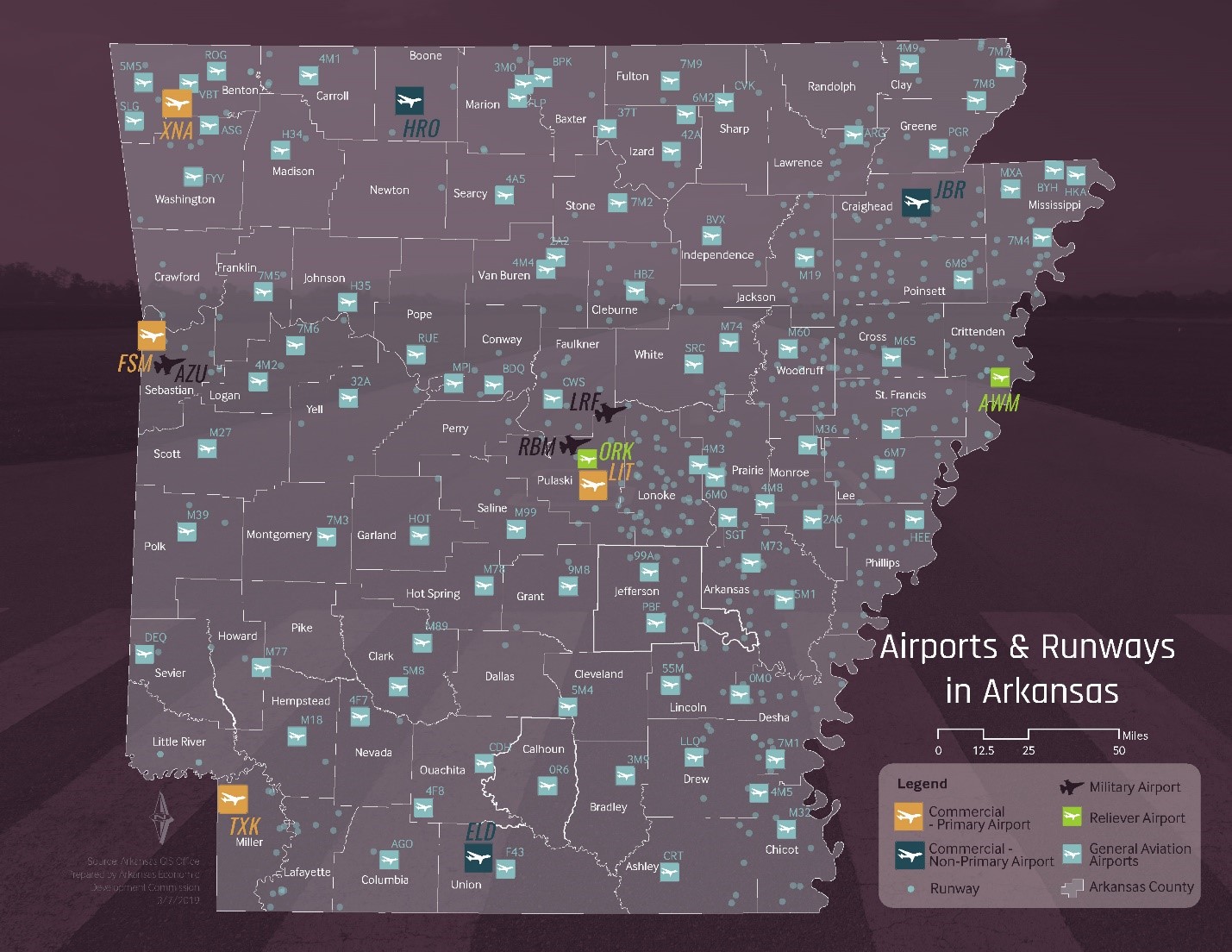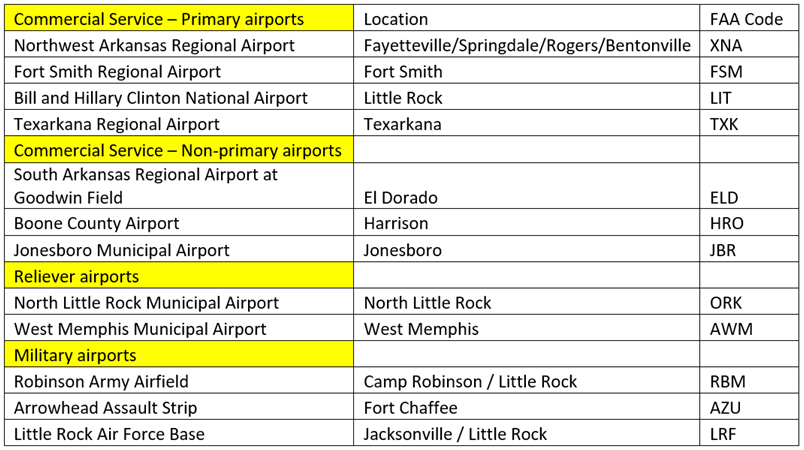Airports and Runways: Taking the Arkansas Economy Skyward
April 02, 2019Air travel is one of the most important economic drivers as it enables people and goods to connect around the country and the world expeditiously. According to the newly published “Economic Impact of Arkansas Airports,” Arkansas systems and military airports support more than 42,400 jobs, directly and indirectly; generate $1.5 billion in payroll; and produce $3.5 billion in economic activity.
The map (see Figure 1) below illustrates the abundance of facilities that support aircrafts across the state, including airports and runways, including seven commercial airports, two reliever airports, 81 general aviation airports, and three military airports (see Table 1).
Figure 1: Airports and Runways in Arkansas (Click to enlarge)

Table 1: Commercial airports, general aviation airports and military airports in Arkansas

The Bill and Hillary Clinton National Airport (LIT) is the largest commercial airport in the state, directly and indirectly supporting 16,778 employees in 2016. In 2017, the airport had 979,530 enplanements, and was ranked the 91st largest airport in the country. Arkansas’ second largest airport is Northwest Arkansas Regional (XNA), which welcomed 698,257 passengers in 2017 and ranked as the 104th largest airport in the US. Both of these airports experienced increased total enplanements in 2017 compared to the year before.
The Little Rock Air Force Base (LRF) is the most significant defense facility in Arkansas. It is a C-130 Hercules training base for the Department of Defense. The Base generates 7,809 jobs on-site, and is the 7th largest employer in the state.
To learn more about the aerospace and defense industry in Arkansas, subscribe to the Aerospace & Defense Beacon, the quarterly email newsletter covering industry news, trends and developments.



